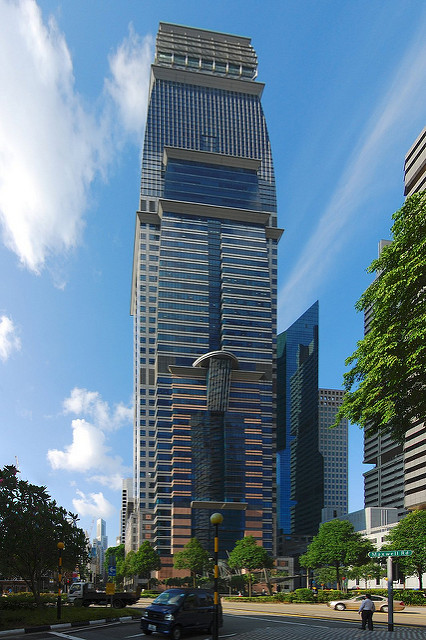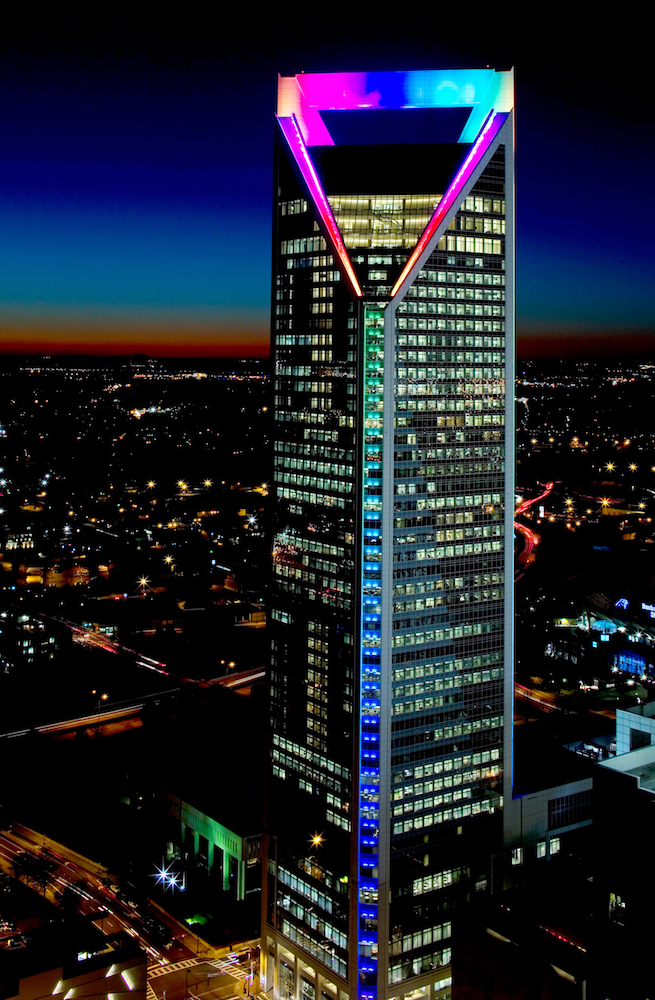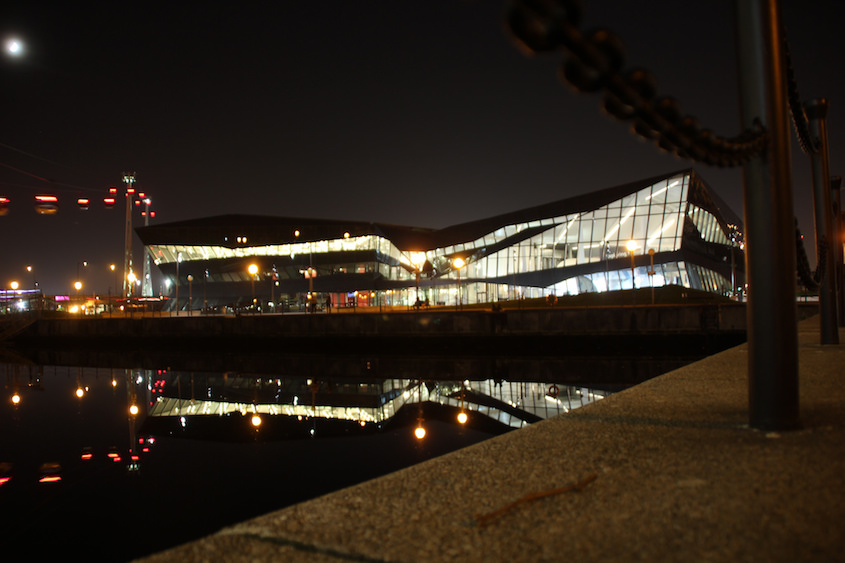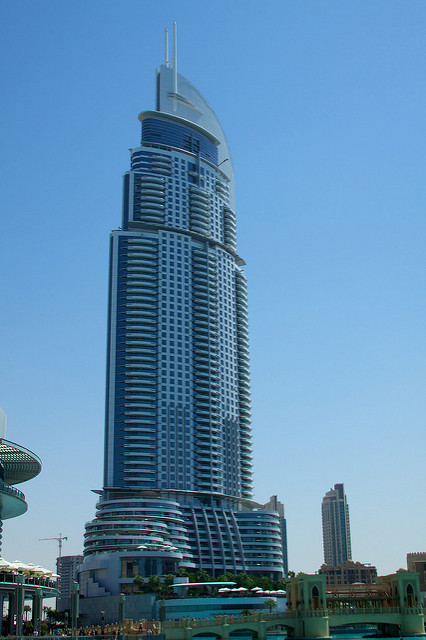5 Modern Intelligent Building Examples You Should Know


The Internet of Things isn’t only making our devices smarter and more connected—it’s also making buildings more intelligent.
Intelligent buildings (also known as smart buildings) use IoT sensors and building automation to control everything from lighting and energy usage to user-centric functions, such as wayfinding and conference room scheduling.
Sensor technology controls everything from the lighting and energy usage of physical spaces to user-centric functions, such as wayfinding and conference room scheduling.
Many offices have some level of building intelligence, but these five intelligent building examples are a source of inspiration for any workplace leader.
5 Intelligent Building Examples
1. Capital Tower, Singapore

This 52-story office building won the Green Mark Platinum Award for its construction and design, along with its energy and water efficiency.
The Capital Tower is an intelligent building with energy efficiency systems built in, including an energy recovery wheel system in its air-conditioning unit, which allows cool air to be recovered to maintain the chillers’ efficiency. Motion detectors installed at the lift lobby and toilets conserve energy, while double-glazed glass windows reduce heat penetration and minimize energy consumption.
To reduce water usage, the building uses condensation from the air handling unit. Devices monitor carbon dioxide and carbon monoxide, ensuring optimal air quality throughout the building.
The 68,000 square-foot building also features a number of amenities, including a sky lobby with a panoramic view of the Singapore skyline, a fitness center, pool, childcare and dining options.
2. Hindmarsh Shire Council Corporate Centre, Australia
In designing the Hindmarsh Shire Council offices, Melbourne-based architect firm k20 Architecture wanted to improve energy efficiency while also enhancing the office environment for employees. This intelligent building is located in an area that’s exposed to extreme temperature conditions, and the architects wanted to use this to their advantage. They built a series of underground thermal chambers and a ventilation system under the floor to draw in fresh air from the exterior.
The earth naturally cools or warms the air, then redistributes it back through the building. LED lighting systems reduce energy consumption and maintenance, while rooftop solar panels harvest energy from the sun. Cross-flow ventilation and zoned motion-detecting lighting also improves energy efficiency, while vertical green walls enhance indoor air quality.
3. Duke Energy Center, Charlotte, NC 
This 51-floor skyscraper (with 48 occupied stories) is owned by Wells Fargo and home to Duke Energy. It boasts the highest green certification, LEED Platinum. The building is able to reuse approximately 10 million gallons of harvested water each year—including groundwater, rainwater and HVAC condensation—which meets roughly 80 percent of the cooling tower’s water needs and 100 percent of the building’s irrigation needs.
There’s a landscaped roof garden, which reduces storm water run-off and uses the plants to capture excess heat. Daylight harvesting blinds move with the angle of the sun to reflect light deeper into the interior, providing more natural light. The building’s exterior was designed to look like a cut crystal and includes more than 45,000 LED lights that illuminate the building at night, displaying a light show at the top of every hour.
Wells Fargo lights the Duke Energy Center in various colors to support events focused on Charlotte, including local nonprofit organizations, as well as various causes that connect directly with the local community. The@WFLightsCLT handle, which announces daily what the building is lit for, has more than 13,000 followers on Twitter.
4. The Crystal, London

Designed by Siemens, The Crystal in London is one of the world’s most sustainable buildings.
The building is 100 percent electric, and solar roof panels generate about 20 percent of its power. It also monitors its energy usage extensively, and as a result, its carbon emissions are about 70 percent lower than comparable office buildings in the UK.
Inside, a wall of green plants welcome guests. The building recycles much of its water and uses solar energy to heat its hot water. A building energy management system controls all electrical and mechanical systems in the building, including its heating, cooling and ventilation systems, lighting, and solar thermal hot water system.
5. Burj Khalifa, Dubai
Dubai is a world leader in the intelligent building movement. The country has a smart building score of 65 out of 100 from Honeywell—a score that evaluates building sustainability, safety and productivity.
The Burj Khalifa already had the impressive distinction of being the world’s tallest building, standing 2,716 feet tall with 160 stories. (To put it into perspective, that’s more than twice as tall as the Empire State Building!) And it has always been on the edge of innovation.
But with the help of Honeywell, it’s now one of the smartest and most sustainable buildings. Honeywell worked with building managers to implementing several intelligent building projects in its marquee venue, which improved air quality, lighting and temperature for its residents. The intelligent building automation system relays real-time information to Honeywell’s IoT platform, which uses smart algorithms to identify anomalies and maintenance issues. Facility managers can use this information to improve building maintenance and asset reliability.
Since launching this system at the Burj Khalifa, facility managers have reduced total maintenance hours by 40 percent.
What Is The Future of Intelligent Buildings?
As IoT sensors and connected devices become more prevalent, we can expect to see more intelligent buildings and more advanced building technology.
Deployment of IoT sensor technology in corporate real estate is expected to grow by 79 percent between 2015 and 2020, and building connectivity is expected to add more than $25 billion to the building-controls market by 2025, according to Deloitte.
The intelligent buildings of tomorrow won’t just include more lighting and temperature controls; they’re also likely to feature greater personalization for occupants.
In the future, employees may arrive at work, check into their workstation and have their desk automatically adjust to their preferences. They’ll be surrounded by IoT sensors that not only make the work environment more comfortable but also improve energy efficiency and building maintenance, ultimately reducing costs.
The future is bright indeed!
(Photo credits: Capital Tower, Nicholas Lannuzel, Flickr; Duke Energy Center, Wells Fargo staff; The Crystal, Paul Wilkinson, Flickr; Burj Khalifa, McKay Savage, Flickr )
